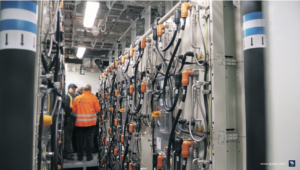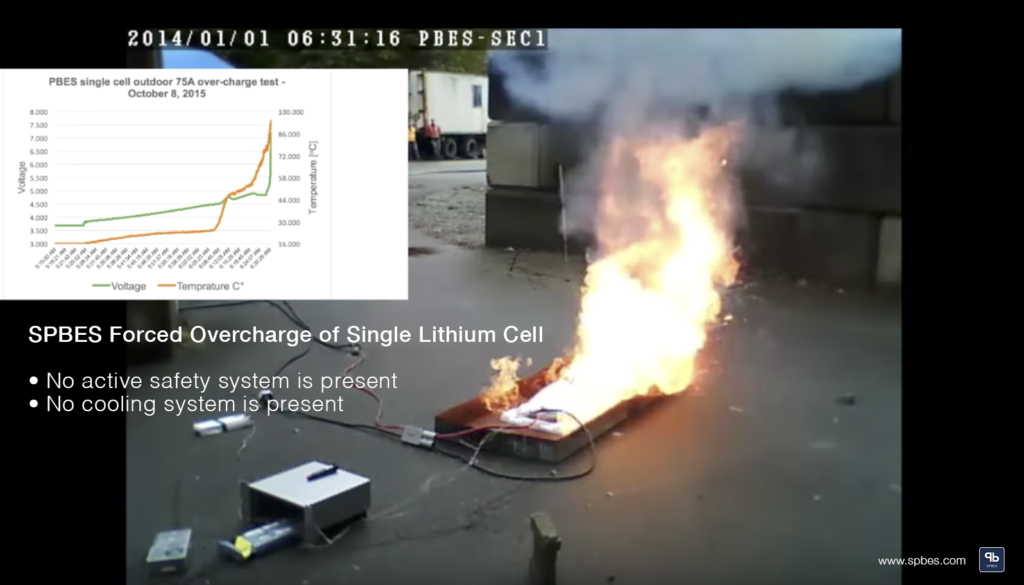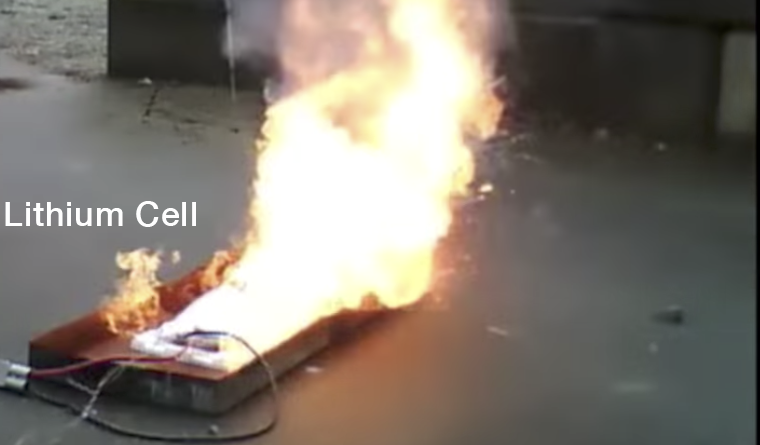The surge of interest in battery power has seen some serious investment in research and development. But is the market pushing too hard in a race to find an alternative fuel for tomorrows vessel’s, asks Samantha Fisk.
German-based technology company Siemens believes that batteries will be the way forward for the market, both in hybrid and pure power form for the maritime markets. This can be seen from product developments that are happening at the company’s offshore and marine center in Trondheim, Norway, that are now producing batteries and using autonomous robots to manufacture them.
Battery technology isn’t entirely new to the maritime market and like most technological advancements has been slowly taking shape over the past few years. Odd Moen, Head of Strategy and Business Development Offshore and Marine Center, Siemens highlights some of the notable projects that Siemens has been involved with over the past few years with regards to battery development, such as the Edda Freya where fuel consumption was reduced by 30% after four small battery packs were installed.
Siemens has developed its Bluevault battery solution that can operate at different profiles. “Battery operating profiles are different than that of a car because of the loading and unloading in the lifetime of the batteries is much higher than that of cars, so therefore you need quite different batteries for marine applications”, Moen explains.

One module consists of 29 battery cells and has a power output of 6.6kWh. The modules are also water cooled, “during operating time all the surfaces need to be a certain temperature of between 20-25°C”, adds Moen. The system is also monitored during operation to make sure that the temperature does not exceed those limits.
French battery manufacturer, Saft, are also heading up new developments in the area of battery technology that they are hoping to add to it current portfolio. Stanley DeGeus, manager, Defense Sales (Maritime), Saft comments that: “Saft continues to develop innovative electro-chemistries and battery systems to provide state-of-the-art solutions to the customers. These innovations will segue nicely into the commercial maritime industry.”
Future developments of the Saft battery will be looking at design, manufacturing, electrical mechanical and electrical that will improve the process and products. The current Seanergy product is a robust battery platform that is modular, scalable and outfitted with the safer Super Phosphate electrochemistry. DeGeus also notes that Seanergy for a long-term and total ownership reduced cost option to the customer.

Concerns over batteries have been raised where there have been instances of fires and in some cases explosions of batteries, both during testing and after being installed onboard.
Grant Brown, Vice President Brand & Marketing, SPBES comments that: “Some companies have been racing to the bottom in terms of price so that safety has suffered. They are trying to increase margin and as a result they don’t buy the best lithium cells or put as high of quality into the rest of the system – battery room, liquid cooling, gas extraction etc.”
DeGeus also cautions against investment in to the wrong type of technology, purely on a cost basis. “Up-front and/or near-term costs often drive the customer to the less or least expensive battery solution. Because, after all, all battery solutions are the same? Unfortunately, nothing could be further from the truth. Various systems have their pluses and minuses, the customers need to do their research; reputable battery companies should provide this information upfront”, he explains.
Further to this, the challenge with the technology being so new is that there is a lack of knowledge of the systems available. DeGeus comments about the market that: “The development challenges to the commercial maritime customer is the continuous, routine and often uninformed changes, made by battery manufacturers and suppliers, that potentially can ultimately effect system performance, reliability and safety. Design, construction and configuration control are essential in providing the surety, confidence and operation of a maritime system. Ultimately the commercial maritime customer assesses, decides, purchases and assumes any risk associated with their battery selection. The phrase “buyer beware” applies.”
Getting the installation and quality of the product is right if it is to serve the purpose that it is intended, also adding to this is the lifetime of a battery. “Clients expect a lifetime, there are a lot of factors which is influencing the lifetime of the batteries. The first one is temperature, also charging cycles and also the construction”, Moen notes.
Moen notes that battery prices will go down in the future, but also questions the length of the lifetime of a battery and instead reduce this to five years. “Price of batteries [in other industries] in the last 15 years has decreased by at least 10%. We also believe that price of such batteries will decrease the same way. So why not produce a battery pack that is smaller and has a lifetime of only five years”, he opines.
The need for green and efficient energy and for a reasonable cost are all drivers behind the developments of battery technology. But a resounding safety aspect is also needing to be heeded with the technology.
































